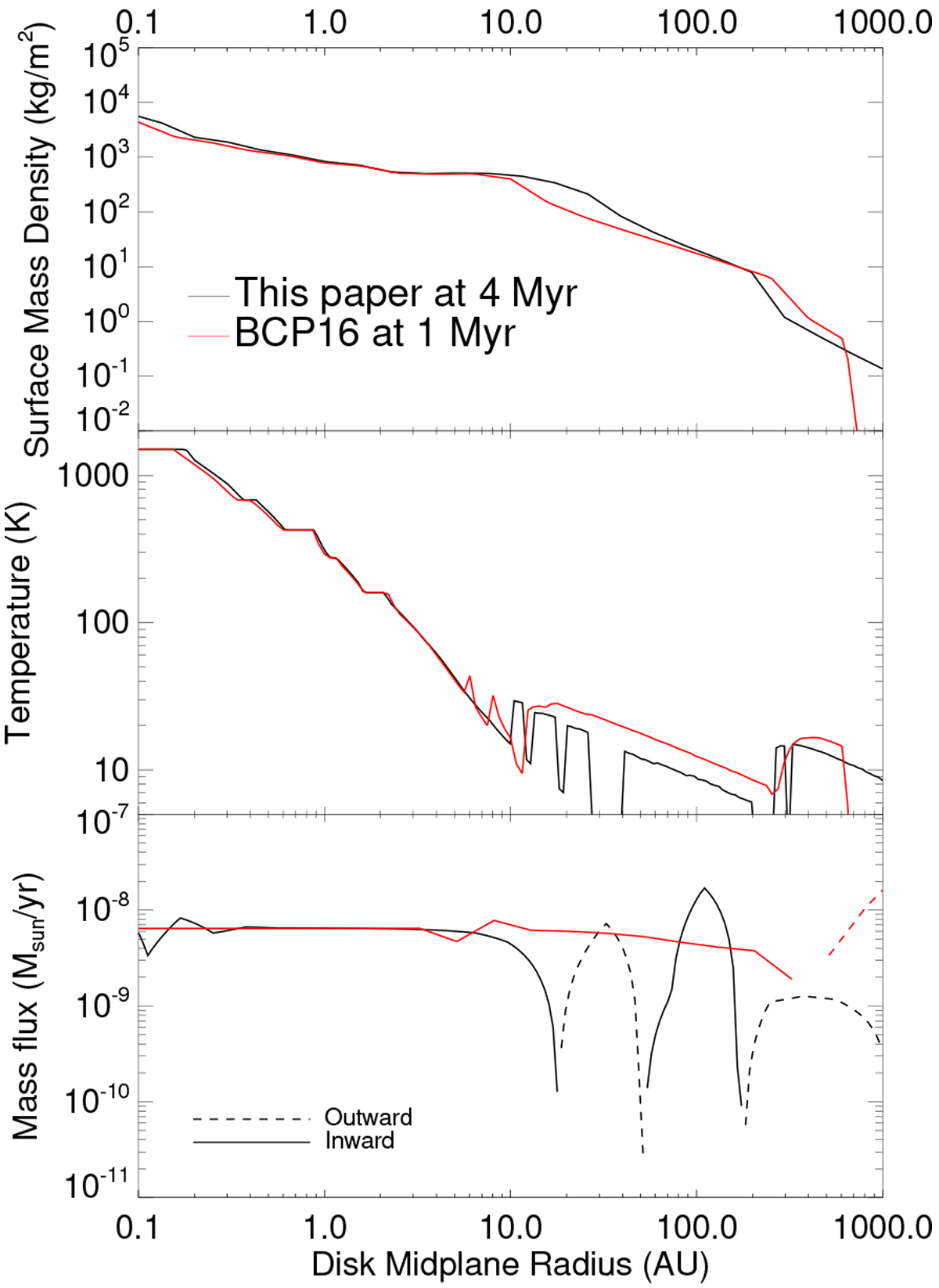Fig. 9

Comparison of the disk radial profiles (upper panel: surface mass density, middle panel: temperature and lower panel: mass flux) for the disk at 4 Myr in the present paper (black line) and a 1 million-year-old disk evolved from an MMSN in BCP16 (red). We notice that the new treatment of the disk self-shadowing induces the presence of temperature drops of up to 10 K in the region 10–100 AU that possibly generate narrow heat transition barriers prone to trap planets.
Current usage metrics show cumulative count of Article Views (full-text article views including HTML views, PDF and ePub downloads, according to the available data) and Abstracts Views on Vision4Press platform.
Data correspond to usage on the plateform after 2015. The current usage metrics is available 48-96 hours after online publication and is updated daily on week days.
Initial download of the metrics may take a while.


